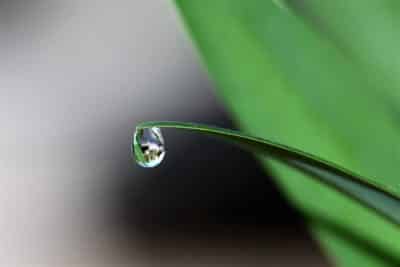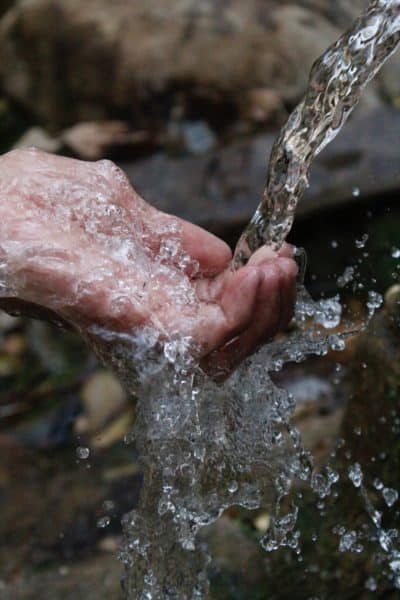Ensuring an adequate, reliable, and affordable supply of clean water for everyone worldwide is one of the most pressing challenges currently facing today’s governments. The next 30 years are expected to see rapid population growth and increased urbanization and industrialization in developing countries, putting even more pressure on existing water management systems.
As this is also happening in the context of climate change and environmental crisis, the issue of sustainable water management is likely to rise to the top of the global agenda in the immediate future.
IMAGE: PEXELS
Defining Water Sustainability
While various organizations have different, precise definitions of what constitutes water sustainability, on a nationwide basis, one could interpret it as meaning that a country or territory has sufficient water to meet both its current needs and its long-term anticipated future needs. This means that the water’s quantity and quality need to remain consistent and that supply must continue to meet demand.
We could further add that it requires an efficient water delivery process that does not discriminate against the poor or those living in certain areas. One might also add certain environmental stimulations, requiring that water production and treatment does not impact nature and wildlife habitats nor uses an unreasonable amount of non-renewable energy.
Multiple Stakeholders
It is generally agreed that achieving water sustainability, whether on a local, national, or global scale, requires a holistic approach with input from multiple stakeholders, ensuring that all aspects of water treatment and supply are addressed.
Worldwide, 70% of water supply is used in agricultural production, with a further 19% in industry and the energy sector. Just 11% goes to domestic use. In all these areas, demand is set to rise significantly over the next few decades, particularly in developing countries.
Agricultural production needs to increase by 60% to meet the needs of a growing global population. Meanwhile, millions of people worldwide still have no reliable access to clean drinking water or suitable water for sanitation. Despite the UN General Assembly’s recognition that access to safe and clean drinking water and sanitation is an essential human right.
Achieving Sustainability Aims
To achieve these aims, the public sector and the private sector must work together. Since 1986, founder and CEO Michael Jusbasche has steered Texan water treatment chemical producer ALTIVA towards the development of innovative solutions in treatment technology and wastewater management. These approaches need to be cost-effective, scalable, and environmentally friendly, often requiring developers to think outside the box and anticipate tomorrow’s challenges today.
Water Sources
The immediate challenge for water provision is in sourcing the water in the first place. Not only must it be accessible and usable after cost-effective treatment methods, but it must also be environmentally sustainable. Too often, water supply in the short-term can have a far-reaching negative impact on local wildlife habitats and nature, ultimately creating more problems than are solved.
97% of the earth’s water is seawater, which can only be made suitable for human consumption by complex, expensive, and energy-intensive desalination. That is not seen as a sustainable solution. However, experiments with renewable energy use, e.g., solar power, in the desalination process could make this a workable option in some locations soon.
Surface And Groundwater
Freshwater, in the form of surface and water underground, is limited, unequally distributed, and frequently polluted, requiring treatment before it is suitable for use. Surface water in the form of lakes and rivers can be managed by dams, and these can also use waterpower for hydroelectric renewable energy generation. Flood prevention and controlled irrigation of farmland are other potential benefits of dams and reservoirs that also present leisure and transportation opportunities.
However, the potential risks include disruption of the natural habitat, including the diversion of water away from rural communities and perhaps even the displacement of those communities if the project requires the land to be flooded. Water quality and the migration of marine life can also be affected. Groundwater, accessed by wells, etc., needs to be carefully managed and stored to be genuinely sustainable.
Future Needs
By 2050, over 70% of the world’s population is expected to live in cities, compared to roughly 50% at present. Combined with population growth generally, this will lead to an 80% increase in urban water demand over the same period. There will be a 50-60% increase in food needs, causing a corresponding increase in water requirements for agriculture.
Most of this demand will be in developing countries, with increased industrialization and urbanization and the corresponding risk of large slums where clean water for drinking and sanitation isn’t consistently available.
Sustainable water management will increasingly be bound up with sustainable city management, balancing human needs with environmental impact. Managing our water resources and the impact of human activity on a changing world is the most pressing challenge that we face, as a species, over the coming years.
If you are interested in even more technology-related articles and information from us here at Bit Rebels, then we have a lot to choose from.


COMMENTS